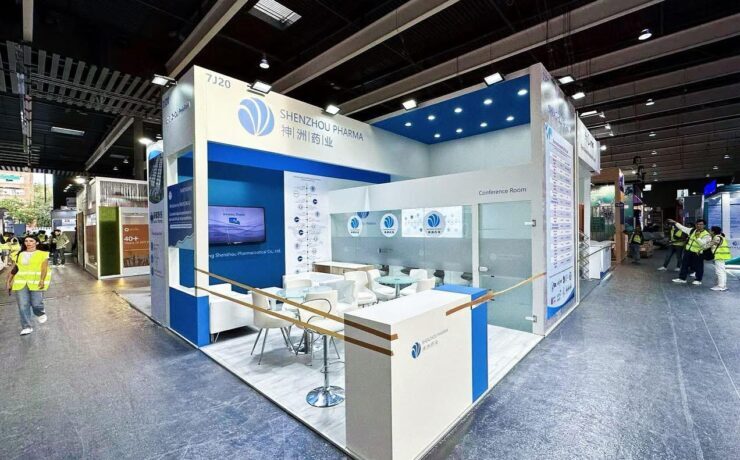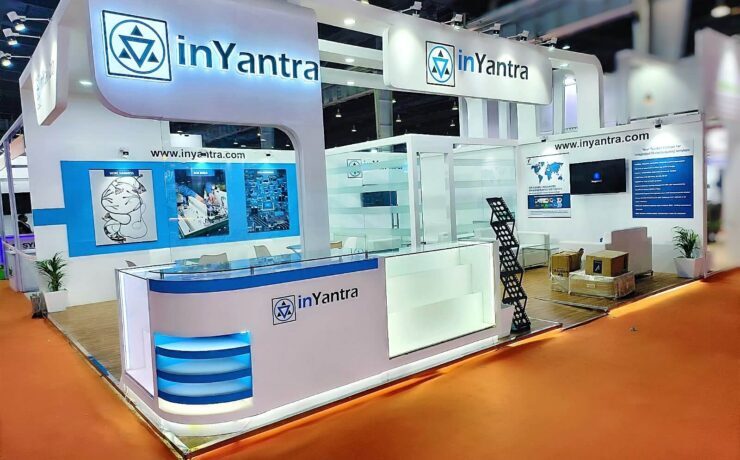The Role of Technology in Modern Exhibitions: A Game-Changer in the Event Industry

Exhibitions, once limited to traditional methods of showcasing products, services, and brands, have undergone a profound transformation. This change can be attributed largely to the role of technology in modern exhibitions. The integration of innovative technological tools and solutions has revolutionized how exhibitors engage with attendees, design their exhibition booths, and create lasting impressions. This shift has enhanced both the exhibitor and attendee experience, ensuring that exhibitions are more dynamic, engaging, and impactful.
The Impact of Technology on Exhibitions
Technology’s influence on exhibitions is multifaceted, ranging from the design of exhibition booths to the way information is shared and experiences are created. Its impact can be categorized into several key areas:
- Enhanced Attendee Engagement: One of the most notable effects of technology on exhibitions is the heightened level of attendee engagement. Traditional static displays are no longer sufficient in capturing the attention of modern audiences. Today, interactive touchscreens, virtual reality (VR), augmented reality (AR), and immersive experiences have become standard in exhibition booth design.
Attendees can now explore products in 3D, interact with holographic displays, and even participate in virtual demonstrations. For example, a company showcasing a new piece of machinery can allow attendees to explore its features through an AR app, providing a hands-on experience without the need for physical interaction. This level of engagement not only captures the attention of visitors but also leaves a lasting impression, increasing the likelihood of post-event conversions. - Personalized Experiences: Technology has enabled exhibitors to create personalized experiences tailored to the specific interests of attendees. Through data analytics and artificial intelligence (AI), exhibitors can collect data about attendees’ preferences, behavior, and interactions. This data can then be used to personalize the content shown at the booth. For instance, a company can display different product information based on the attendee’s industry or interests, creating a more relevant and meaningful experience.
Moreover, technologies such as RFID (Radio Frequency Identification) and beacon technology can track attendee movement throughout the exhibition, offering insights into the most visited areas and the time spent at various booths. This information allows exhibitors to refine their strategies in real-time and improve future exhibitions. - Improved Exhibition Booth Design: The design of exhibition booths has evolved significantly due to advancements in technology. Gone are the days of simple banners and static displays. Today, booths are equipped with high-resolution LED screens, interactive kiosks, and even robotic assistants that guide attendees through the booth. This not only enhances the aesthetic appeal of the booth but also creates a more interactive and memorable experience for visitors.
In addition to this, 3D printing technology has enabled exhibitors to create custom booth components with intricate designs and unique structures that were previously difficult to achieve. These advancements in c allow brands to stand out and make a bold statement, attracting more foot traffic and engagement. - Seamless Information Sharing: Technology has revolutionized how information is shared at exhibitions. Instead of handing out physical brochures and catalogs, exhibitors now use digital platforms to share information. Attendees can scan QR codes to download product details, view promotional videos, or connect with the brand on social media. This not only reduces the clutter associated with physical materials but also allows for more efficient information dissemination.
Furthermore, exhibitors can use digital signage and displays to showcase real-time data, product updates, and even live social media feeds. This dynamic approach to information sharing keeps attendees informed and engaged throughout the event, fostering a deeper connection between the brand and its audience. - Virtual and Hybrid Exhibitions: The COVID-19 pandemic accelerated the adoption of virtual and hybrid exhibitions, and technology played a crucial role in making this transition possible. Virtual exhibitions allow exhibitors to reach a global audience without the limitations of physical space or geography. Platforms like Zoom, Microsoft Teams, and custom-built virtual event platforms have enabled exhibitors to host virtual booths, live demos, and even one-on-one meetings with attendees.
Hybrid exhibitions, which combine both in-person and virtual elements, have become increasingly popular. This format offers the best of both worlds, allowing exhibitors to engage with a physical audience while simultaneously reaching a global virtual audience. Technology plays a critical role in ensuring a seamless experience for both in-person and virtual attendees, enabling live streaming, real-time interaction, and online networking opportunities. - Increased ROI through Data Analytics: One of the most significant impacts of technology on exhibitions is the ability to measure and analyze data in real-time. Exhibitors can track attendee engagement, booth traffic, lead generation, and conversion rates with greater precision than ever before. Data analytics tools provide valuable insights into what strategies are working and which areas need improvement.
For example, by analyzing the number of visitors to a booth, the duration of their stay, and their interactions with different touchpoints, exhibitors can determine which elements of their booth are most effective. This data can then be used to optimize future exhibitions, ensuring a higher return on investment (ROI). - Sustainability and Eco-Friendly Exhibitions: As sustainability becomes a growing concern in the event industry, technology has provided solutions for creating more eco-friendly exhibitions. The use of digital materials, virtual displays, and energy-efficient lighting has reduced the need for physical resources and minimized the environmental impact of exhibitions. Additionally, virtual and hybrid exhibitions have reduced the carbon footprint associated with travel, making it easier for companies to showcase their products without contributing to environmental degradation.
Exhibition booth design has also evolved to include sustainable materials and practices, such as using recycled materials for booth structures and energy-efficient technologies to power displays. This not only benefits the environment but also resonates with attendees who value sustainability and eco-conscious practices. - Streamlined Event Management: The role of technology extends beyond the exhibition booth itself; it also plays a vital role in event management. Event organizers now use advanced software and apps to streamline various aspects of the exhibition, from registration and ticketing to booth assignment and attendee tracking.
For instance, exhibitors can use event management software to track registrations, send automated email reminders, and manage attendee data. Mobile apps allow attendees to view the event schedule, navigate the exhibition floor, and even connect with exhibitors through in-app messaging. This level of convenience enhances the overall experience for both exhibitors and attendees, ensuring a smooth and efficient event. - Augmented Networking Opportunities: Exhibitions have always been about networking, and technology has taken this to the next level. Today, exhibitors and attendees can connect through digital platforms, exchange contact information via NFC (Near Field Communication) technology, and schedule meetings through event apps. This streamlines the networking process, making it easier for exhibitors to connect with potential clients and partners.
Virtual exhibitions also offer enhanced networking opportunities, with platforms that allow attendees to participate in virtual meetups, live chats, and video calls. These tools facilitate connections between exhibitors and attendees, even when they are located in different parts of the world.
Key Technologies Shaping Modern Exhibitions
Several specific technologies have had a profound impact on the exhibition industry, reshaping how events are designed and experienced. Some of these include:
- Virtual Reality (VR): VR allows exhibitors to create immersive, 360-degree experiences that transport attendees into virtual environments. This is particularly useful for industries like real estate, architecture, and automotive, where virtual tours can showcase products in a realistic setting.
- Augmented Reality (AR): AR overlays digital elements onto the physical world, allowing attendees to interact with products in new ways. AR apps can provide additional product information, show product features in action, and even allow attendees to visualize how a product would look in their own space.
- 3D Printing: 3D printing has revolutionized exhibition booth design, allowing exhibitors to create custom booth components with intricate designs that were previously impossible to achieve. This technology also enables rapid prototyping, allowing companies to showcase new product designs without the need for expensive manufacturing processes.
- Beacon Technology: Beacons are small wireless devices that communicate with attendees’ smartphones via Bluetooth. Exhibitors can use beacon technology to send targeted messages, promotions, or information to attendees as they approach the booth. This creates a more personalized and engaging experience for visitors.
- Interactive Touchscreens: Interactive touchscreens allow attendees to explore products, view videos, and interact with digital content at their own pace. These screens are often integrated into exhibition booth designs, providing a hands-on experience that encourages attendee engagement.
The Future of Technology in Exhibitions
As technology continues to evolve, so too will its role in exhibitions. Emerging technologies like AI-powered chatbots, facial recognition, and holographic displays will further enhance the exhibitor and attendee experience. The continued integration of virtual and augmented reality will allow for even more immersive and personalized experiences, while data analytics will continue to drive insights and improve ROI.
Moreover, as sustainability becomes an increasingly important consideration, technology will play a crucial role in creating eco-friendly exhibitions that minimize waste and reduce the environmental impact of events.
Conclusion
The impact of technology on exhibitions cannot be overstated. From enhancing attendee engagement and improving exhibition booth design to streamlining event management and increasing ROI, technology has transformed every aspect of the exhibition industry. As we look to the future, the continued adoption of innovative technologies will ensure that exhibitions remain dynamic, engaging, and relevant in an ever-evolving landscape. For exhibitors, embracing these technological advancements is not just an option—it’s a necessity for staying competitive and creating memorable, impactful experiences that resonate with attendees long after the event is over.





